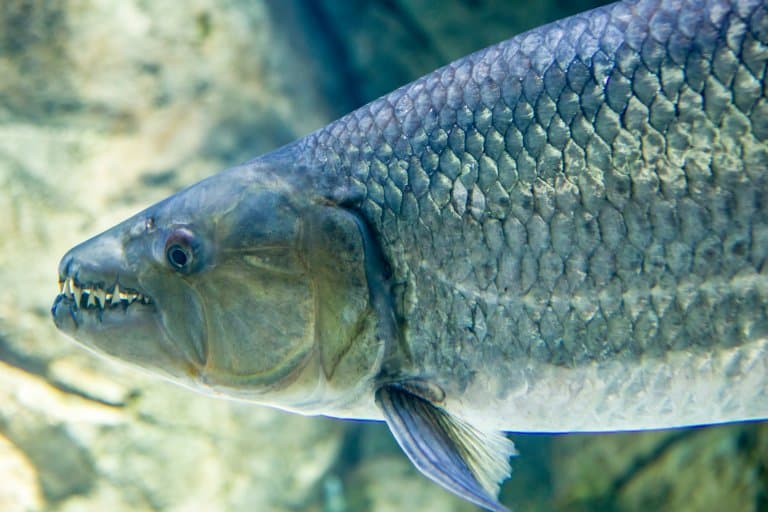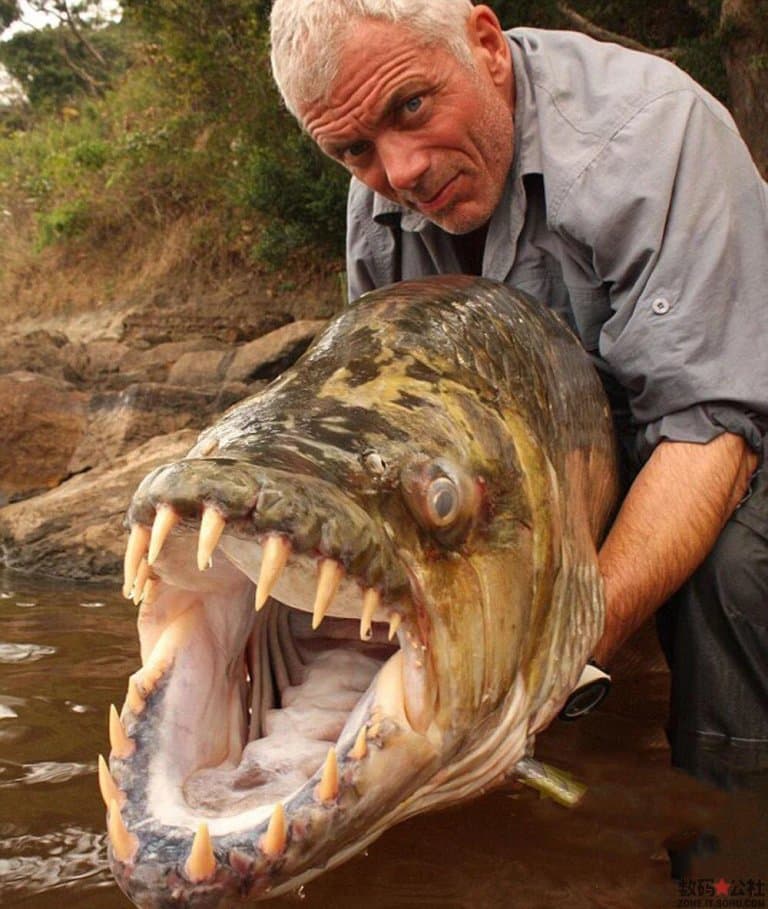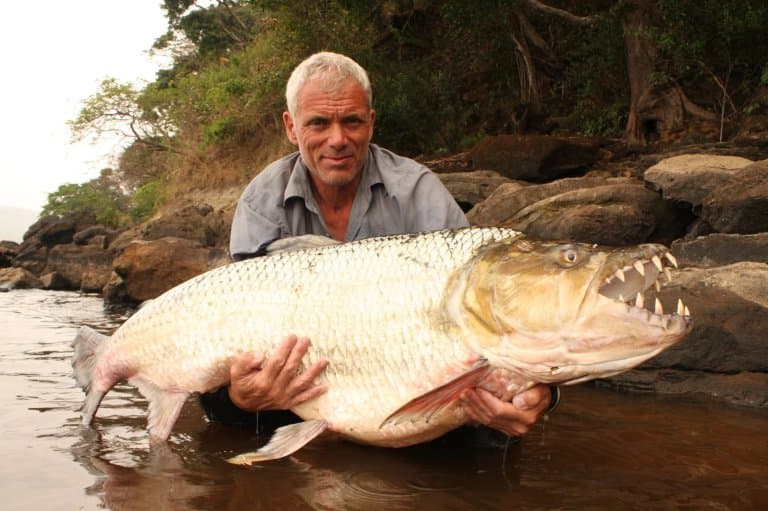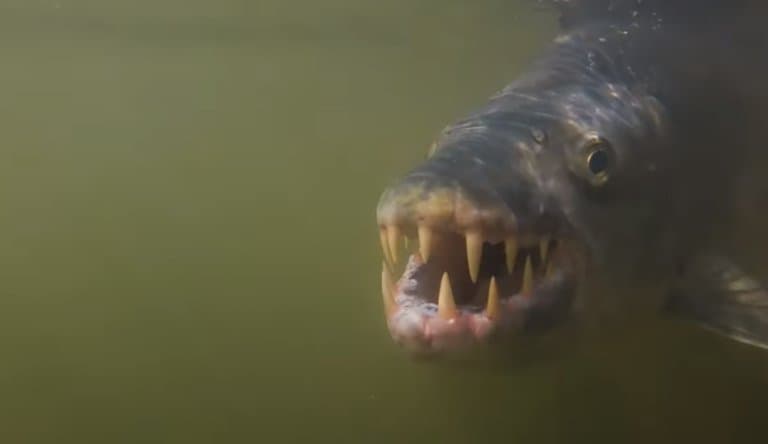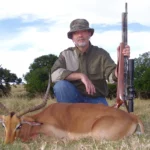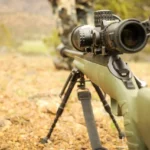What’s the best rifle scope for hunting you should be using this fall?
I think we can probably agree that choosing the best rifle scope for hunting can be a pretty difficult task, especially for those who are new to hunting or just don’t know a lot about hunting rifle scopes in general.
To start off with, there are so many different rifle scopes available on the market these days that selecting the right one can be overwhelming. Additionally, it can be difficult to cut through some of the marketing speak and hype out there in order to determine what stuff is worth your hard earned money and what rifle scopes you’re better off avoiding.
I’ve experienced a lot of that same frustration myself.
I’ve tried out literally dozens of different rifle scopes with varying results over the years. Though I’ve never owned a truly bad scope, I have purchased a few models that I felt were a waste of money and would would not recommend to others. Luckily, there are several high quality rifle scopes for hunters on the market today that provide exceptional performance both at the range and afield.
In this post, I share my picks for the best rifle scopes for hunting. Just buying one of these rifle scopes won’t guarantee that you’ll fill your tag this fall. However, the right scope can still provide an important advantage when you need it most and increase the odds that you’ll cleanly and ethically take the game you’re after.
Before we get started, here’s a disclaimer: some of the links below are affiliate links. This means I will earn a small commission if you make a purchase.
This commission comes at no extra cost to you. This helps support the blog and allows me to continue to create free content that’s useful to hunters like yourself. Thanks for your support.
Now that we’ve got that out of the way, let’s get started.
Feel free to scroll straight through the article, or click one of the links below to jump straight to the best rifle scopes for hunting in the specific category you’re looking for.
Most Versatile Rifle Scope For Hunting
Best Value Rifle Scope For Hunting
Best Rifle Scopes For Hunting Under $200
Best Rifle Scope For Hunting Under $300
Best Rifle Scope For Hunting Under $500
Best Rifle Scope For Hunting Under $600
Best Rifle Scope For Hunting Under $1,000
Best Rifle Scope For Hunting Under $1,500
Best Rifle Scope For Hunting Under $2,000
Best Rifle Scope For Hunting Under $3,000
Best Scopes For Hunting With An AR
Best First Focal Plane Scope For Hunting
Best “Smart” Rifle Scopes For Hunting
Most Versatile Rifle Scope For Hunting
Leupold VX-5HD 3-15x44mm
I’ll cut straight to the chase: I think the Leupold VX-5HD is the most versatile hunting scope currently available on the market. Not only that, but this is my favorite hunting scope. Full stop.
Why? First, it has fantastic glass and provides outstanding light transmission. Plus, the specific VX-5HD model I’m recommending here also uses an illuminated FireDot Duplex reticle. Basically, it’s a standard duplex crosshair with an illuminated red dot in the center that you can turn on and off.
It works just like a typical scope during the day, but you can turn on that illuminated reticle to aid in aiming during low light conditions. I’ve been in several situations where I had game come out during legal shooting light, but it was dark enough that I had trouble seeing the animals with my naked eye.
Fortunately, the light gathering capabilities of the VX-5HD are so fantastic that I could see much better while looking through the scope.
For example, I successfully and cleanly took a big blue wildebeest with my VX-5 on a recent hunt in Africa at dusk when it was so dark that I could not see the black crosshairs on his dark body. However, I just turned on the illuminated reticle, put the dot where I wanted to hit, squeezed the trigger, and he dropped in his tracks.
There’s no way I could have ethically or practically taken that shot with a scope that lacked the fantastic light transmission of the VX-5HD or without the illuminated reticle.
The Leupold VX-5HD also comes with Leupold’s CDS-ZL system. This is basically a custom elevation turret matched to your favorite hunting load. Once you install the new CDS-ZL2 dial, it’s a simple matter of turning it to the right range and doing your part as a shooter.
No more taping a bullet dope chart to the stock of your rifle or trying to determine the proper amount of hold over before you take a long range shot. If your target is 400 yards away, just set the custom elevation dial to 400 yards, hold the crosshairs exactly where you want to hit, and squeeze the trigger.
The VX-5HD also has a side focus parallax adjustment dial and a wide zoom range from 3x all the way up to 15x on the high end. This wide zoom range makes the scope well suited for basically any hunting situation you can think of from whitetail in thick timber, to open country antelope or mule deer hunts, or even elk up in the Rocky Mountains.
This scope is also really well built, tracks beautifully, has forgiving eye relief, and holds a zero exceptionally well.
To be fair, the Leupold VX-6HD line has a few additional features that some hunters really like. However, I own and have hunted with both and, in my opinion, the VX-5HD provides the best balance of size, weight, price, and the features that are most important to me.
I have a couple of 3-15×44 VX-5HD scopes on my traditional hunting rifles as well as a 1-5x20mm version on my .458 Win Mag that’s perfect for use on dangerous game at close range.
All in all, this is a fantastic rifle scope for hunting that provides high end performance at a surprisingly reasonable price. If that big buck or bull of your dreams steps out of the woods right at last light, you want a scope like the VX-5HD on your deer rifle so you can make that shot when it counts.
Key Features
- Weight: 19.7 ounces
- Magnification Range: 3-15x
- Objective Lens Diameter: 44mm
- Tube Diameter: 30mm
- Field of View: 38.3-7.7 feet at 100 yards
- Turret Click Values: .25 MOA
- Reticle Focal Plane: Second
- Parallax/Focus: Side adjusting parallax/focus knob
- Knob Style: Capped Windage & Custom Dial System-ZL Elevation (CDS-ZL)
- Illuminated Reticle: Yes
Pros
- Wide magnification range
- Excellent quality glass
- Illuminated reticle is perfect for low light situations
- Great balance of useful features without too many unnecessary “extras”
Cons
- On the heavy side
- Lacks throw level on magnification ring
- Higher price point
BUY A LEUPOLD VX-5HD SCOPE ON AMAZON HERE
BUY A LEUPOLD VX-5HD SCOPE AT OPTICS PLANET HERE
Best Value Rifle Scope For Hunting
Leupold VX-3HD 4.5-14x40mm
The Leupold VX-3HD scope is next up as my selection for the best value rifle scope for hunting. Leupold makes fantastic quality hunting scopes and their VX-3HD model (which replaced the old VX-3i) provides a good mix of useful features and high end glass in a relatively compact package that’s also available at a moderate price tier.
This scope uses a 1″ main body tube, which helps keep it light and compact. Scopes like this one with a 1-inch tube are easier to mount low to the bore, which facilitates a good cheek weld and gives the rifle a more streamlined profile that’s less prone to snagging on obstructions.
A 4.5x magnification at the low end is good for closer range hunting situations while a 14x magnification at the high end works great for checking targets at the range or for shots at longer range afield.
Speaking of which, the Leupold VX-3HD also comes with a coupon you can redeem with Leupold to receive a custom elevation turret matched to your favorite hunting load. They call this their Custom Dial System Zero Lock (CDS-ZL). After installing the new custom dial, just range the target, turn the dial to that number, and aim dead on. Furthermore, the ZeroLock system on that turret eliminates accidental dial movement.
Add it all up, and you’ve got a great hunting rifle scope with lots of useful features at a reasonable price point that should serve you well for many years of use afield.
Key Features
- Weight: 13.3 ounces
- Magnification Range: 4.5-14x
- Objective Lens Diameter: 40mm
- Tube Diameter: 1-inch
- Field of View: 19.9-7.4 feet at 100 yards
- Turret Click Values: .25 MOA
- Reticle Focal Plane: Second
- Parallax/Focus: Fixed at 150 yards
- Knob Style: Capped Windage & Custom Dial System-ZL Elevation (CDS-ZL)
- Illuminated Reticle: No
Pros
- Light and compact
- Good quality glass
- Removable throw lever on magnification ring facilitates rapid adjustments
- Lots of features with a reasonable price
Cons
- No parallax adjustment dial
- No illuminated reticle
BUY A LEUPOLD VX-3HD SCOPE ON AMAZON HERE
BUY A LEUPOLD VX-3HD SCOPE AT OPTICS PLANET HERE
Best Rifle Scopes For Hunting Under $200
Vortex Crossfire II
The Vortex Crossfire II is a great entry level rifle scope and is exactly what you need if you want a no frills rifle scope for hunting under $200 and don’t want to do a lot of shopping.
This scope is nitrogen filled so it’s is fog proof and waterproof. It also has multi-coated lenses that facilitate light transmission and clarity under a variety of circumstances.
This scope is available with the Vortex Dead Hold BDC reticle. At the maximum magnification, the hashmarks on the reticle provide 1.5 MOA, 4.5 MOA, and 7.5 MOA holdover points as well as 2 MOA, 4 MOA, 6 MOA, and 8 MOA windage hold marks.
While the Vortex Optics Crossfire II does not provide light transmission or image quality on par with some of the more expensive optics on this list, it’s still a capable hunting scope for those who don’t need a high performance optic. It’s also comes with Vortex’s lifetime warranty.
Make no mistake: the Crossfire II is perfectly adequate for typical hunting situations, especially for hunters on a tight budget.
Key Features
- Weight: 14.3 ounces
- Magnification Range: 3-9x
- Objective Lens Diameter: 40mm
- Tube Diameter: 1-inch main tube
- Field of View: 34.1-12.6 feet at 100 yards
- Turret Click Values: .25 MOA
- Reticle Focal Plane: Second
- Parallax/Focus: Fixed at 100 yards
- Knob Style: Capped
- Illuminated Reticle: No
Pros
- Light and compact
- Very reasonable price
- Perfect for a budget conscious hunter
Cons
- Lower image quality than the higher end scopes
- Restrictive eye box
- No parallax adjustment dial
- No illuminated reticle
BUY A VORTEX CROSSFIRE II SCOPE ON AMAZON HERE
BUY A VORTEX CROSSFIRE II SCOPE AT OPTICS PLANET HERE
Burris Fullfield E1
While the Vortex Crossfire scope is often slightly less expensive, the Burris FullField E1 scope has a couple of advantages for hunters at a slightly higher price point. It still usually comes in under $200 though.
First, this scope uses slightly better quality glass than the Vortex Crossfire. It also uses the Burris Ballistic Plex Reticle that includes holdover points for various yardages. This is also a durable and well built scope, but comes with the Burris Forever Warranty in case something breaks.
With those things in mind, the Burris provides a good step up in performance for just a little bit more money than the Vortex Crossfire II.
Key Features
- Weight: 13 ounces
- Magnification Range: 3-9x
- Objective Lens Diameter: 40mm
- Tube Diameter: 1-inch
- Turret Click Values: .25 MOA
- Reticle Focal Plane: Second
- Parallax/Focus: Fixed at 100 yards
- Knob Style: Capped
- Illuminated Reticle: No
Pros
- Light and compact
- Very reasonable price
- Perfect for a budget conscious hunter
Cons
- Lower image quality than higher end scopes
- No parallax adjustment
BUY A BURRIS FULLFIELD E1 SCOPE ON AMAZON HERE
BUY A BURRIS FULLFIELD E1 SCOPE AT OPTICS PLANET HERE
Best Rifle Scope For Hunting Under $300
Leupold VX Freedom 3-9x40mm
The Leupold VX-Freedom is another good rifle scope that’s an excellent choice for hunters on a budget. Leupold made a bunch of changes to their line of optics a few years ago and the VX-Freedom replaced the old VX-2 line of scopes. However, this update is a good thing and the VX-Freedom still incorporates the features people loved about the Leupold VX-2 with a handful of added improvements.
Like all Leupold rifle scopes, the VX-Freedom uses quality glass that’s coated to maximize light transmission and minimize glare and reflection. The glass on this scope is not quite as good as what you’ll find on the VX-3HD, VX-5HD, or VX-6HD, but it’s still really good (better than the Vortex Crossfire II).
Plus, the scope is even lighter and little smaller in profile than the VX-3HD.
The Leupold VX-Freedom also comes with a coupon you can redeem with Leupold to receive a CDS-ZL turret matched to your favorite hunting load. This facilitates shots at slightly longer range and a good rifleman should have no issues reaching out a bit on game if necessary.
Even so, this scope is better suited to short to medium range hunting scenarios. Hunters who plan on doing a lot of hunting in open country where encounters with game at longer distances are more likely should look to one of the higher end scopes on this list instead.
Even so, the VX-Freedom is a very capable rifle scope for hunting, especially since it’s available for less than $300.
Key Features
- Weight: 12.2 ounces
- Magnification Range: 3-9x
- Objective Lens Diameter: 40mm
- Tube Diameter: 1-inch
- Field of View: 33.1-13.6 feet at 100 yards
- Turret Click Values: .25 MOA
- Reticle Focal Plane: Second
- Parallax/Focus: Fixed at 150 yards
- Knob Style: Capped Windage & Custom Dial System-ZL Elevation (CDS-ZL)
- Illuminated Reticle: No
Pros
- Light and compact
- Very reasonable price
- Good quality glass
- Lots of features with a reasonable price
- Perfect for a budget conscious deer hunter
Cons
- Lower image quality than the higher end scopes
- No parallax adjustment dial
- No illuminated reticle
BUY A LEUPOLD VX-FREEDOM SCOPE FROM AMAZON HERE
BUY A LEUPOLD VX-FREEDOM SCOPE FROM OPTICS PLANET HERE
Best Rifle Scope For Hunting Under $500
Vortex Diamondback 4-12x40mm
Next up is the Vortex Diamondback 4-12x40mm scope, which I think is the best rifle scope for hunting under $500. Vortex makes great quality hunting scopes and their Diamondback line provides a good mix of good quality glass in a rifle scope suitable for most hunting situations that’s also available at a moderate price tier.
The Vortex Diamondback uses a solid one-piece aircraft-grade aluminum alloy construction that makes this scope very durable and also offers good resistance to heavy recoil, even from magnum cartridges like the 7mm Rem Mag and 300 Win Mag. The Diamondback is also purged with argon to ensure it’s waterproof and fogproof.
Plus, it uses advanced fully multi-coated optics to deliver crystal clear images. This scope also uses Vortex’s Dead-Hold BDC reticle. At the maximum magnification, the hashmarks on this reticle provide 1.5 MOA, 4.5 MOA, and 7.5 MOA holdover points as well as 2 MOA, 4 MOA, 6 MOA, and 8 MOA windage hold marks.
This scope also uses a 1″ main body tube, which helps keep it light and compact. Scopes like this one with a 1-inch tube are easier to mount low to the bore, which facilitates a good cheek weld and gives the rifle a more streamlined profile that’s less prone to snagging on obstructions.
A 4x magnification at the low end is good for closer range hunting situations while a 12x magnification at the high end works great for checking targets at the range or for slightly shots at longer range afield.
Add it all up, and you’ve got a great hunting scope that’s right in that “sweet spot” where it doesn’t cost too much, but should also serve you well for many years of hunting use. This is the sort of scope the vast majority of hunters could buy today and happily use for the next 20-30 years without ever feeling like they needed something nicer.
Key Features
- Weight: 14.6 ounces
- Magnification Range: 4-12x
- Objective Lens Diameter: 40mm
- Tube Diameter: 1-inch
- Field of View: 32.4-11.3 feet at 100 yards
- Turret Click Values: .25 MOA
- Reticle Focal Plane: Second
- Parallax/Focus: Fixed at 100 yards
- Knob Style: Capped Windage & Elevation
- Illuminated Reticle: No
Pros
- Light and compact
- Good quality glass
- Good light transmission
- Reasonable price
- Durable construction
Cons
- No parallax adjustment dial
- No illuminated reticle
BUY A VORTEX DIAMONDBACK 4-12x SCOPE ON AMAZON HERE
BUY A VORTEX DIAMONDBACK 4-12x SCOPE ON OPTICS PLANET HERE
Best Rifle Scopes For Hunting Under $600
Vortex Viper HS-T 4-16x44mm
The Viper line is the next tier of rifle scopes above the Diamondback line and below the Razor line from Vortex. As such, the Vortex Viper has better quality glass, better anti-reflective coatings, better overall construction, and a few more features than the Vortex Diamondback.
In that vein, the Vortex Viper HST (Hunting Shooting Tactical) is a very tough, well built hunting scope with fantastic extra-low dispersion glass, a forgiving eye box, exposed tactical turrets, and a side focus parallax adjustment dial that’s just a great all-around optical system. It’s not quite as nice as the Vortex Razor LHT (more on that scope shortly), but the Vortex Viper is still a darn good scope, especially considering you can pick one up for quite a bit less than $1,000.
All in all, the Vortex Viper HST is a fantastic hunting rifle scope that provides high end performance out to surprisingly long distances at a shockingly reasonable price.
Key Features
- Weight: 20.8 ounces
- Magnification Range: 4-16x
- Objective Lens Diameter: 44mm
- Tube Diameter: 30mm
- Field of View: 27.4-7.4 feet at 100 yards
- Turret Click Values: .25 MOA
- Reticle Focal Plane: Second
- Parallax/Focus: Side adjusting parallax/focus knob
- Knob Style: Exposed Windage & Elevation Dials
- Illuminated Reticle: No
Pros
- Wide magnification range
- Excellent quality glass
- Reasonable price for scope with great glass and lots of features
Cons
- On the heavy side
- Lacks throw level on magnification ring
- No illuminated reticle
BUY A VORTEX VIPER HS-T SCOPE ON AMAZON HERE
BUY A VORTEX VIPER HS-T SCOPE AT OPTICS PLANET HERE
Best Rifle Scope For Hunting Under $1,000
Zeiss Conquest V4 3-12x44mm
European companies like Zeiss and Swarovski are known for producing outstanding quality optics in general. You tend to get what you pay for with that stuff though and European optics are also generally very expensive.
Fortunately, the Zeiss Conquest V4 is a great way to get a high quality European rifle scope for less than $1,000. This scope does not have a lot of “bells and whistles”, but it’s still an excellent German scope with great low light performance. Zeiss advertises that it uses six-layer multi-coated lenses to offer exceptional 90% light transmission and a clear sight picture.
This is not billed as an extremely lightweight hunting scope or one that’s ideally suited for long range hunting situations. However, the Conquest V4 is an outstanding choice for a hunter who wants a good rifle scope without paying for a bunch of extra features.
Key Features
- Weight: 22.5 ounces
- Magnification Range: 3-12x
- Objective Lens Diameter: 44mm
- Exit Pupil (low magnification): 14.66mm
- Exit Pupil (high magnification): 3.66mm
- Tube Diameter: 30mm
- Field of View: 19-4.8 feet at 100 meters
- Turret Click Values: .25 MOA
- Reticle Focal Plane: Second
- Parallax/Focus: Fixed at 50 yards
- Knob Style: Capped
- Illuminated Reticle: No
Pros
- Excellent light transmission at a reasonable price
- Very good quality glass
- Perfect for a hunter who wants a good scope without a bunch of “extras”
- Very durable
Cons
- Physically on the large and heavy side
- Smaller field of view
- No parallax adjustment dial
- No illuminated reticle
BUY A ZEISS CONQUEST SCOPE FROM AMAZON HERE
BUY A ZEISS CONQUEST SCOPE FROM EURO OPTIC HERE
BUY A ZEISS CONQUEST SCOPE FROM OPTICS PLANET HERE
Best Rifle Scope For Hunting Under $1,500
Vortex Razor HD LHT 3-15×42
Look no further than the Vortex Razor HD LHT if you want the best rifle scope for hunting under $1,500. This scope uses high quality glass, has a reticle with a center illuminated dot, a side parallax knob, and an exposed elevation turret with Vortex’s RevStop Zero System (their version of a a zero stop).
There’s a reason why Vortex Optics markets the Razor HD LHT as “one scope to rule them all” and this rifle scope is well suited for use in dark-timber on whitetails as well as for open country mule deer and pronghorn hunts where precision long range shots may be necessary.
The Razor HD LHT also comes with a coupon you can redeem with Kentron Industries to receive a custom elevation turret matched to your favorite hunting load to assist with making long shots on game and at the range.
Finally, the illuminated reticle is especially nice for use in low-light conditions where there’s still legal shooting light, but it may be too dark to see the reticle. Just turn on the illuminated center dot, place that red dot where you want to hit, and squeeze the trigger. The reticle also works just fine during the daytime when illumination is turned off.
If you want the a great scope for hunting, then strongly consider getting a Vortex Razor HD LHT.
Key Features
- Weight: 19.1 ounces
- Magnification Range: 3-15x
- Objective Lens Diameter: 42mm
- Tube Diameter: 30mm
- Field of View: 35.3-7.0 feet at 100 yards
- Turret Click Values: .25 MOA
- Reticle Focal Plane: Second
- Parallax/Focus: Side adjusting parallax/focus knob
- Knob Style: Exposed elevation turret (MOA)
- Illuminated Reticle: Yes
Pros
- Can order a custom elevation dial
- Excellent glass quality
- Illuminated center dot
- Well suited for a variety of hunting situations
Cons
- Busy reticle
- On heavy side
BUY A VORTEX RAZOR SCOPE ON AMAZON HERE
BUY A VORTEX RAZOR SCOPE AT OPTICS PLANET HERE
Best Rifle Scope For Hunting Under $2,000
Leupold VX-6HD 3-18x44mm
The Leupold VX-6HD product line is Leupold’s top end hunting scope lineup and, at least in my opinion, the 3-18x50mm version of the VX-6HD is definitely Leupold’s best rifle scope for hunting overall.
This is because it uses outstanding glass with superior coatings that facilitates excellent light transmission. Plus, this particular scope also has an illuminated FireDot Duplex reticle. Just like the VX-5HD I mentioned earlier, the FireDot Duplex reticle is a standard duplex crosshair with an illuminated red dot in the center that you can turn on and off.
The VX-6HD is basically an upgraded VX-5HD with a wider zoom range (6x instead of 5 x magnification), a little bit better quality glass, and a couple of other extra features many hunters like having like a reversible throw lever, an electronic reticle level, and flip up alumina lens covers.
While I think the VX-5HD an absolutely outstanding rifle scope, those extra features and capability of the VX-6HD make it a better choice for other hunters who want a little bit better scope with slightly better low light performance, a couple of extra features, and who don’t mind spending a little bit more.
All things considered, the Leupold VX-6HD is an amazing rifle scope. This optic provides a substantial improvement in low light performance over the VX-Freedom and VX-3HD scope lines as well as a modest improvement over the VX-5HD overall.
You can definitely rely on the VX-6HD when the chips are down on a big hunt!
Key Features
- Weight: 21.6 ounces
- Magnification Range: 3-18x
- Objective Lens Diameter: 44mm
- Exit Pupil (low magnification): 14.67mm
- Exit Pupil (high magnification): 2.44mm
- Tube Diameter: 30mm
- Field of View: 38.3-6.4 feet at 100 yards
- Turret Click Values: .25 MOA
- Reticle Focal Plane: Second
- Parallax/Focus: Side adjusting parallax/focus knob
- Knob Style: Capped Windage & Custom Dial System-ZL Elevation (CDS-ZL)
- Illuminated Reticle: Yes
Pros
- Wide magnification range
- Excellent quality glass
- Illuminated reticle is perfect for low light situations
- Just about every feature you could want on a hunting scope
Cons
- On the large and heavy side
- Higher price point
BUY A LEUPOLD VX-6HD SCOPE ON AMAZON HERE
BUY A LEUPOLD VX-6HD SCOPE AT OPTICS PLANET HERE
Best Rifle Scopes For Hunting With An AR Platform
Riton 3 TACTIX 1-8×24
The rise in popularity of the AR platform over the past few years has fortunately resulted in a dramatic increase in scope options specifically designed for hunting with those rifles. Don’t just slap any rifle scope on your AR-15 or AR-10 though.
Instead, you should use a scope like the Riton 3 TACTIX 1-8×24 LPVO (low powered variable optic) that will help you take advantage of the strengths of the AR platform while afield. Specifically, the Riton 3 TACTIX 1-8×24 is a reasonably priced, but feature rich rifle scope that’s great for those hunting situations.
With a 1-8x magnification range, the scope has a wide field of view that facilitates rapid target acquisition at lower power for close quarters work, but also provides ample magnification for longer ranged shots. It also comes with flip up lens covers and an illuminated reticle, which are uncommon features on scopes in this price range.
I especially like the illuminated reticle, which is great for low light performance and can be turned up bright enough to be useful during the day as well. This rifle scope also has a streamlined profile that allows it to be mounted close to the bore to facilitate a good cheek weld while shooting and minimize the chances of the scope getting hung up on vegetation or clothing.
This is the scope I hunt with on my AR-15 and it’s perfect for the job.
Key Features
- Weight: 19.3 ounces
- Magnification Range: 1-8x
- Objective Lens Diameter: 24mm
- Tube Diameter: 30mm
- Field of View: 105.8-13.1 feet at 100 yards
- Turret Click Values: .5 MOA
- Reticle Focal Plane: Second
- Parallax/Focus: Fixed at 100 yards
- Knob Style: Capped
- Illuminated Reticle: Yes
Pros
- Wide magnification range
- Wide field of view
- Removable throw lever on magnification ring facilitates rapid adjustments
- Overall design is perfect for quick target acquisition
- Lots of features for a reasonable price
Cons
- On the heavy side
- Non-traditional reticle
BUY A RITON TACTIX SCOPE ON AMAZON HERE
BUY A RITON TACTIX SCOPE FROM RITON HERE
Use promo code BIGGAME10 to receive 10% off orders directly from Riton.
BUY A RITON TACTIX SCOPE AT OPTICS PLANET HERE
Vortex Strike Eagle 1-8x24mm
Vortex also produces a great scope for hunting with an AR-platform in the Strike Eagle 1-8x24mm. This rifle scope is also a LPVO that’s well suited for use on the AR platform while hunting (put it on your battle rifle too).
Specifically, the Vortex Strike Eagle 1-8×24 is a reasonably priced, but still low profile, capable, and feature rich scope that’s perfect for those hunting situations.
With a 1-8x magnification range, the scope has a wide field of view that facilitates rapid target acquisition at lower power, but also provides plenty of magnification for longer ranged shots. It also comes from the factory with a removable throw lever for rapid magnification adjustments and an illuminated reticle. This scope also has a streamlined profile.
Key Features
- Weight: 17.6 ounces
- Magnification Range: 1-8x
- Objective Lens Diameter: 24mm
- Tube Diameter: 30mm
- Field of View: 109.0-14.4 feet at 100 yards
- Turret Click Values: .5 MOA
- Reticle Focal Plane: Second
- Parallax/Focus: Fixed at 100 yards
- Knob Style: Capped
- Illuminated Reticle: Yes
Pros
- Wide magnification range
- Massive field of view
- Removable throw lever on magnification ring facilitates rapid adjustments
- Design is perfect for quick target acquisition
- Lots of features for a reasonable price
- Durable
Cons
- On the heavy side
- Non-traditional reticle
BUY A VORTEX STRIKE EAGLE ON AMAZON HERE
BUY A VORTEX STRIKE EAGLE FROM OPTICS PLANET HERE
Best Rifle Scope For Hunting Under $3,000
Swaroviski Z6i 2-12x50mm
We can’t talk about the best rifle scopes for hunting without mentioning Swarovski. Specifically, I think the Swarovski Z 6i 2-12x50mm scope is the best rifle scope under $3,000.
Swarovski optics are known for having some of the absolute best quality glass in the business. Just look through a Swaro rifle scope or binoculars and you’ll immediately see what I mean.
Well, the Z6i is one of their higher end scopes and uses incredible glass that provides outstanding transmission while at the same time minimizing glare and reflection.
The Swarovski Z6i also has an illuminated reticle that also facilitates aiming under dim lighting conditions. Users also have the option of adding a custom elevation turret for use at longer range. The wide zoom range combined with the with the large 50 mm objective lens also makes this a very flexible scope with a large exit pupil across a wide magnification range.
All things considered, it’s tough to argue with a combination of crystal-clear images, incredible light transmission, moderate weight, and those additional features that make the Swaro Z6i such an excellent hunting scope both for use during the middle of the day as well as at dawn and dusk when things are so challenging.
To be perfectly clear, the Z6i is about as far as you can get from a “cheap” or a “budget friendly” scope. However, you really get what you pay for with optics and this rifle scope is certainly no exception to that rule.
Not everybody needs a scope this nice, but the Swarovski Z6i is definitely a great option for someone who wants the best rifle scope for hunting possible.
Key Features
- Weight: 18.3 ounces
- Magnification Range: 2-12x
- Objective Lens Diameter: 50mm
- Exit Pupil (low magnification): 25mm
- Exit Pupil (high magnification): 4.16mm
- Tube Diameter: 30mm
- Field of View: 63-10.5 feet at 100 yards
- Turret Click Values: .25 MOA
- Reticle Focal Plane: Second
- Parallax/Focus: Fixed
- Knob Style: Capped Windage & Optional Custom Elevation Turret
- Illuminated Reticle: Yes
Pros
- Reasonable size and weight
- Outstanding quality glass
- Illuminated reticle
- Excellent image quality
Cons
- Higher price point
- No parallax adjustment dial
BUY A SWAROVSKI Z6i SCOPE FROM AMAZON HERE
BUY A SWAROVSKI Z6i SCOPE FROM EURO OPTIC HERE
Best First Focal Plane Rifle Scope For Hunting
Nightforce ATACR 5-25×56
With a gigantic 56mm objective lens and fully multi-coated ED glass, the Nightforce ATACR is another excellent addition to this list of rifle scopes for hunting. This scope also has a large 34mm main tube, exceptionally clear glass, and a zoom range from 5x all the way up to 25x on the high end that make it a good choice for long-range shooting.
The Nightforce ATACR also provides over 35 mils of elevation adjustment. This rifle scope is also available in first focal plane and second focal plane configurations. Plus, this scope is the very definition of durability too! For all those reasons, I think the ATACR is the best long range hunting scope.
So, this is the best rifle scope for you if you’re looking for something with excellent low light performance that you can also use to reach out to extreme ranges with.
Key Features
- Weight: 39.1 ounces
- Magnification Range: 5-25x
- Objective Lens Diameter: 56mm
- Exit Pupil (low magnification): 10.5mm
- Exit Pupil (high magnification): 2.2mm
- Tube Diameter: 34mm
- Field of View: 18-4.9 feet at 100 yards
- Turret Click Values: .25 MOA or .1 MRAD
- Parallax/Focus: Side adjusting parallax/focus knob
- Knob Style: Capped
- Illuminated Reticle: Yes
Pros
- Wide magnification range
- Optimized for long distance performance
- Illuminated reticle
- Exposed elevation turrets facilitate rapid adjustments
- Side focus parallax
- Unsurpassed low light performance
- Excellent image quality
Cons
- Large and heavy
- Expensive
BUY A NIGHTFORCE ATACR SCOPE ON AMAZON HERE
BUY A NIGHTFORCE ATACR SCOPE ON EURO OPTIC HERE
BUY A NIGHTFORCE ATACR SCOPE AT OPTICS PLANET HERE
Best Rimfire Rifle Scope For Hunting
Leupold VX Freedom 3-9x40mm Rimfire
Though they’re not very popular for big game hunting, rimfire cartridges are extremely common in the hands of small game hunters and are also just a lot of fun to shoot at the range. With that in mind, Leupold optimized a version of their highly regarded VX-Freedom rifle scope for use with rimfire cartridges like the 22 Long Rifle (22LR), 22 Magnum (22 WMR), and 17 Hornady Magnum Rimfire (17 HMR).
This scope is basically just a regular VX-Freedom rifle scope with a fixed parallax at 60 yards to put it more in line with the most commonly encountered shooting ranges rimfire cartridges are used at. Plus, it has a special rimfire reticle to help the shooter with the appropriate holdover at various ranges.
Don’t worry: this scope is not caliber specific either and will work with basically any rimfire cartridge. Heck, you can even put it on a centerfire rifle and take longer shots with it if you want to.
Additionally, this rifle scope still has all the other features of the VX-Freedom with great glass, a durable and waterproof construction, and a lightweight and compact overall profile.
Add it all up and the Leupold VX Freedom Rimfire is without a doubt the best rimfire hunting scope and it won’t let you down. Put one of these scopes on your Ruger 10/22, Bergara B-14R, rimfire AR, or other rimfire rifle and hunt with confidence!
Key Features
- Weight: 12.2 ounces
- Magnification Range: 3-9x
- Objective Lens Diameter: 40mm
- Tube Diameter: 1-inch
- Field of View: 33.1-13.6 feet at 100 yards
- Turret Click Values: .25 MOA
- Reticle Focal Plane: Second
- Parallax/Focus: Fixed at 60 yards
- Knob Style: Capped Windage & Elevation Turrets
- Illuminated Reticle: No
Pros
- Light and compact
- Very reasonable price
- Good quality glass
- Lots of features with a reasonable price
- Perfect for a budget conscious deer hunter
Cons
- Lower image quality than the higher end scopes
- No parallax adjustment dial
- No illuminated reticle
BUY A LEUPOLD VX-FREEDOM RIMFIRE SCOPE FROM AMAZON HERE
BUY A LEUPOLD VX-FREEDOM RIMFIRE SCOPE FROM OPTICS PLANET HERE
Best “Smart” Rifle Scopes For Hunting
Sig Sauer Sierra6BDX 3-18×44
The Sig Sauer Sierra series of rifle scopes utilize an innovative design that incorporates the SIG SAUER BDX (Ballistic Data Xchange) technology to provide a rapid, and load specific holdover that’s calibrated to the prevailing environmental conditions.
On one hand, this is a traditional rifle scope you can mount on a rifle and use just like any other. However, it really becomes a powerful hunting scope when integrated with the (free) Sig BDX app and/or with a BDX equipped rangefinder (sold separately).
When used together, the Sig Sauer Sirra 6 BDX can calculate an elevation holdover and wind hold for your favorite hunting cartridge out to 1,000 yards.
How does it all work?
First, build a ballistic profile for your chosen hunting cartridge in the app, link your scope to your rangefinder and smartphone via Bluetooth, and sight the scope in properly with that load.
Next, use a BDX equipped rangefinder to measure the range to the target. The rangefinder will also measure the current temperature and altitude, will automatically calculate the appropriate ballistic solution and holdover for that exact distance and environmental conditions, and will transfer that data to the scope instantly via a Bluetooth connection. The rangefinder does not measure wind speed or direction, but the user can enter that information manually in the app to calculate a wind hold as well.
Then, the scope will display an illuminated dot in the reticle that indicates the appropriate elevation holdover (and an additional dot indicating a wind hold if the user entered that information in the app).
Finally, the hunter just needs to place the reticle (which is an illuminated dot) on the spot they want to hit on the target and squeeze the trigger.
This whole system can calculate a ballistic solution out to around 1,000 yards (depending on the exact rifle/cartridge/bullet combination). Fortunately, this rifle scope will likely calculate a ballistic holdover at basically any reasonable range for most centerfire rifle cartridges.
Additionally, it’s important to note that this scope will NOT automatically turn the user into someone capable of shooting targets or game at 1,000 yards. Yes, it can make it a whole lot easier to calculate a ballistic holdover, but there’s more to being a good marksman than that.
It’s also important to note that this is not the best hunting scope for everyone. First, it requires a little bit of tech “know how” and practice to get everything working together.
This scope also requires the use of some specific rangefinders and a ballistic app for maximum utility (it can be used alone, just not to its full potential). It’s also not legal to hunt with in every single place. For instance, it’s definitely illegal in Idaho along with potentially a couple of other places, so check the rules in your area before purchasing.
Furthermore, some hunters just don’t like scopes like the Sierra 6 (or the Burris Eliminator that’s up next) because they think it’s unethical or will encourage hunters to take shots at ranges they should pass on.
Furthermore, this is a battery powered scope (uses 2 CR2032 batteries) and will not work if the batteries die. And to further emphasize the point, it also relies on a Bluetooth connection with a phone and/or rangefinder to make full use of all the scope’s capabilities.
While not gigantic, the Sig Sauer Sierra 6 is also on the heavy side.
Additionally, since it has those electronic systems inside, the Sierra 6 has lower quality glass than is the case with traditional rifle scopes at a similar price point.
With all that said, I’ll be the first to admit that the Sig Sauer Sierra 6 is not the best hunting scope for everyone. However, I still think it’s worth further investigation for those who appreciate its capabilities (especially at longer ranges) and who hunt in places where it’s legal.
Key Features
- Weight: 23.8 ounces
- Magnification Range: 3-18x
- Objective Lens Diameter: 44mm
- Tube Diameter: 30mm
- Field of View: 34.9-5.8 feet at 100 yards
- Turret Click Values: .25 MOA
- Reticle Focal Plane: Second (digital)
- Parallax/Focus: Side adjusting parallax/focus knob
- Knob Style: Capped
- Illuminated Reticle: Yes
Pros
- Rapidly calculates ballistic holdover
- Increases ethical range of hunter
- Comes with removable throw ring to facilitate rapid magnification adjustments
Cons
- On heavy side
- Lacks exposed elevation turrets
- Requires batteries
- Can be used as a “stand alone product” but requires use of app and special rangefinder for full utility
- Not legal in every state
- Lower optical quality than similarly priced hunting scopes
BUY A SIG SAUER SIERRA 6 SCOPE ON AMAZON HERE
BUY A SIG SAUER SIERRA 6 SCOPE AT OPTICS PLANET HERE
Burris Eliminator IV
The Burris Eliminator is perhaps the most advanced hunting scope currently available to the average hunter. Why is this the case?
Well, the Eliminator is a rifle scope with a built in rangefinder, ballistic calculator, and inclinometer. Prior to the hunt, just plug in the ballistic data for your chosen hunting cartridge and sight the scope in properly with that load.
Once that’s complete, the hunter only needs to aim at the target (or animal) they want to shoot and push a button to activate the built in rangefinder. After measuring the range to the target, the scope will automatically calculate the appropriate ballistic solution and holdover for that exact distance and adjust the reticle within the scope accordingly.
At that point, the hunter just needs to place the reticle (which is a bright red dot) where they want to hit and squeeze the trigger.
This scope can measure ranges out to 2,000 yards. This is a hunting scope though and it will not calculate a ballistic solution out that far. The details really vary and depend on the cartridge in question, but this rifle scope will likely calculate a ballistic holdover at basically any reasonable range for most centerfire rifle cartridges.
Additionally, though this scope can indeed greatly assist in quickly making a shot at extended range, it’s important to note that it will NOT turn a poor marksman into an expert.
The capabilities this scope has are impressive, but this is also a somewhat controversial rifle scope. For one thing, the Burris Eliminator IV is not legal to use everywhere (Idaho being a notable example of where it’s illegal). Other sportsmen are uncomfortable with just how easy this scope can make it for someone to shoot at extended range out of fear that it’s unethical or will encourage hunters to take shots they have no business attempting.
Furthermore, this is a battery powered scope (uses 2 AA batteries) and will not work if they die (which is a possibility in very cold weather). The Eliminator IV is also physically pretty large and heavy. Heck, it’s easily the heaviest rifle scope on this list of the best hunting scopes.
Finally, this scope is also pretty expensive. However, due to the fact that it also has a laser rangefinder and all those electronic systems inside, the Eliminator IV has lower quality glass than is the case with traditional rifle scopes at a similar price point. The glass isn’t bad by any stretch of the imagination, but it’s just not quite as good as a similarly priced traditional scope.
With all those things in mind, the Burris Eliminator IV is definitely not the best hunting scope for everyone. However, I think it’s the best scope currently available for someone who hunts in areas where it’s legal to use and who appreciate the advantages it delivers.
Key Features
- Weight: 28.8 ounces
- Magnification Range: 4-16x
- Objective Lens Diameter: 50mm
- Tube Diameter: Direct mount (no rings necessary and mounts directly to Weaver or Picatinny style rail)
- Turret Click Values: .125 MOA
- Reticle Focal Plane: First
- Parallax/Focus: Bell mounted parallax/focus knob
- Knob Style: Capped
- Illuminated Reticle: Yes
Pros
- Rapidly calculates ballistic holdover
- Eliminates need to carry separate rangefinder, dope card, or ballistic calculator
- Increases ethical range of hunter
Cons
- Physically large and heavy
- Requires batteries
- Not legal in every state
- Expensive
- Lower optical quality than similarly priced hunting scopes
BUY A BURRIS ELIMINATOR IV SCOPE ON AMAZON HERE
BUY A BURRIS ELIMINATOR IV SCOPE AT OPTICS PLANET HERE
Enjoy this article on the best rifle scopes for hunting? Please share it with your friends on Facebook and Twitter.
Make sure you subscribe to The Big Game Hunting Podcast and follow The Big Game Hunting Blog on Facebook, Instagram, Twitter, and YouTube.
NEXT: BEST HUNTING EAR PROTECTION FOR SPORTSMEN








![Air gun 101: The differences between .177 & .22 – Which jobs they do best ? [Infographic]](https://airgunmaniac.b-cdn.net/wp-content/uploads/2024/11/1773-218x150.jpeg)
























































